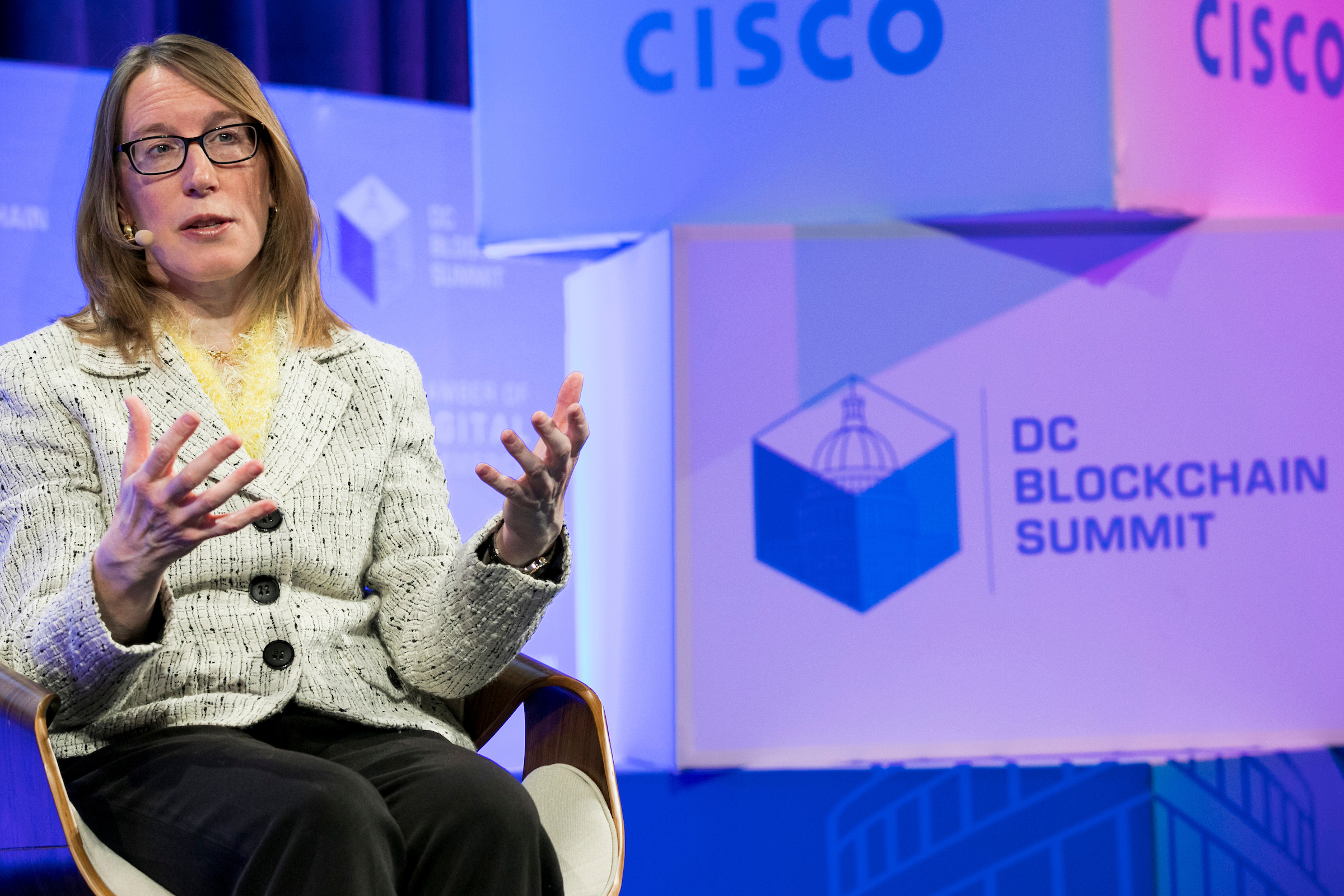Blockchain boosters warn that regulatory uncertainty is harming innovation

Should the US government step in to help blockchain technology? Some think so. An influential advocacy group called the Chamber of Digital Commerce recently published a call to action asking federal policymakers to address the “lack of a predictable legal environment” it says is hindering blockchain experimentation and innovation.
That plea was made again this week at the group’s fourth annual DC Blockchain Summit in Washington, where the tension between the industry’s boosters and its regulators was palpable.
The relationship was always going to be awkward. After all, blockchains let users execute financial transactions outside the traditional—and highly regulated—financial system. For years after Bitcoin emerged a decade ago, however, financial regulators paid little attention to the cryptocurrency marketplace, which was small and mostly confined to technically inclined enthusiasts. That changed abruptly in 2017, when companies began raising hundreds of millions of dollars overnight by selling blockchain-based tokens via so-called initial coin offerings, or ICOs. Investing in “crypto” became a mainstream activity, and that certainly got the attention of the regulators in charge of protecting investors.
Then came the crackdown. Over the course of the past year or so, the US Securities and Exchange Commission has penalized a number of ICO projects for failing to register with the agency before selling securities. This seems to have had a chilling effect on the industry.
Businesses and consumers are reluctant to develop and use blockchain applications in the face of uncertainty over whether they might violate outdated financial laws, the Chamber of Digital Commerce argues in its “National Action Plan” (PDF). Among other things, it calls for “clearly articulated and binding statements from regulators regarding the application of law to blockchain-based applications and tokens.”
On Wednesday at the DC Blockchain Summit, SEC commissioner Hester Peirce warned industry advocates to be careful what they wish for. Peirce called the action plan “helpful” and agreed that clear regulatory guidelines are needed. But she cautioned against expecting the government to try to foster innovation, which she said could do more harm than good.
Peirce urged patience and cooperation. Regulators are slow, she said, and this technology is complicated: “There’s a learning curve. People at the SEC are trying to learn about this space, and trying to understand where the pressure points are.” If industry members want the process to go faster, they should have more conversations with her agency, she said. “You all need to come in and tell us where the pain points are, and where the old regime doesn’t fit.”
Of course, government agencies aren’t the only ones that can make new policy. Congress could pass legislation that paves the way to new, crypto-specific rules. But although a number of bills to that effect have been introduced in both houses, it’s not clear whether or when they’ll ever see a vote.
Regulatory uncertainty is one of the main reasons that while many traditional financial firms are interested in investing in crypto-assets, a good number have chosen to remain on the sidelines, Tom Jessop, president of Fidelity Digital Assets, told the DC crowd. Many believe that the entry of more hedge funds, family offices, and other “institutional investors” will help the industry mature.
Jessop’s company was recently spun out of Fidelity Investments and has launched a service for securely storing cryptocurrency private keys for firms like hedge funds and family offices. He said he’d like policymakers to move the conversation beyond whether this or that coin is a security or not. Blockchains have a broad range of potential applications in financial services as well as other industries, Jessop said. “How do we develop a framework where over time our economy, our government, and our people can take advantage of this technology in many ways?”
Keep Reading
Most Popular
Large language models can do jaw-dropping things. But nobody knows exactly why.
And that's a problem. Figuring it out is one of the biggest scientific puzzles of our time and a crucial step towards controlling more powerful future models.
How scientists traced a mysterious covid case back to six toilets
When wastewater surveillance turns into a hunt for a single infected individual, the ethics get tricky.
The problem with plug-in hybrids? Their drivers.
Plug-in hybrids are often sold as a transition to EVs, but new data from Europe shows we’re still underestimating the emissions they produce.
Stay connected
Get the latest updates from
MIT Technology Review
Discover special offers, top stories, upcoming events, and more.